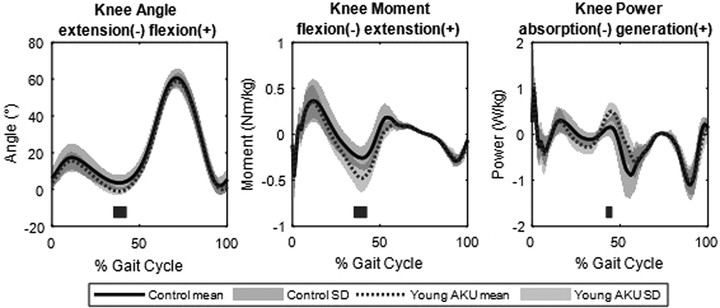Identifying joint-specific gait mechanisms causing impaired gait in alkaptonuria patients

Abstract
Alkaptonuria is a rare genetic disease that leads to structural joint damage and impaired movement function. Previous research indicates that alkaptonuria affects gait, however the detailed mechanisms are unknown. Research question: What are the joint-specific gait mechanisms which contribute to impaired gait in alkaptonuria patients? Methods: The gait of 36 alkaptonuria patients were compared to those of 21 unimpaired controls. The AKU patients were split into three age groups (young 16–29 years, n = 9, middle 30–49 years, n =16 and old 50 +years, n = 11), and the kinematic and kinetic gait profiles were compared to speed-matched controls using a spm1d twosample t-test. Results: The young AKU group showed significant differences in the sagittal plane of the knee joint compared to speed-matched controls. The middle group showed deviations in the knee and hip joints. The old group showed significant differences in multiple joints and planes and exhibited gait mechanisms which may be compensation strategies. Significance: This study is the first to identify and describe joint-specific mechanisms during gait in alkaptonuria patients. Gait deviations were evident even in young AKU patients, including a 16-year-old, much earlier than previously thought. The knee joint is an important focus of future research and potential interventions as deviations were found across all three AKU age groups.